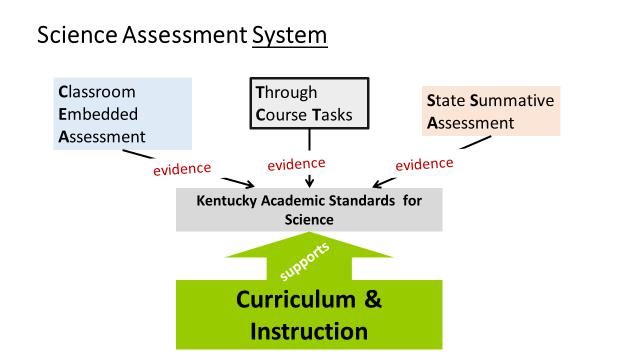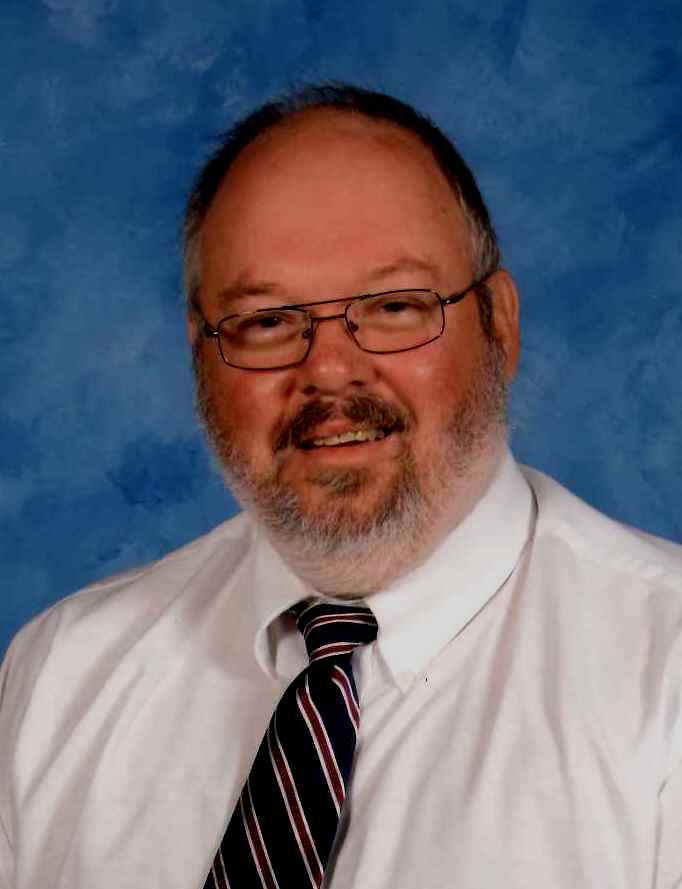Next Gen Navigator
Kentucky’s Systems Approach to Assessing Three-Dimensional Standards
By Cindy Workosky
Posted on 2017-09-26
One thing is clear about our multi-dimensional standards: They require a complex and thoughtful approach to assessment. No single, conventional, summative test can be expected to provide reliable data sufficient enough to satisfy the demands of all possible audiences. To say a student truly understands all dimensions of a multi-year set of Performance Expectations (PEs) would require days of intensive assessment or a technological solution that currently exists only in science fiction. So how do we improve our ability to ascertain what students know and can do, given the limitations of the traditional summative assessment model?
The obvious answer is that we should go beyond the traditional summative assessment model. We’re not required to base our understanding of student achievement solely on a single assessment given at the end of the school year (or multiple years when grade-band testing.) To more accurately assess multi-dimensional standards, we need to employ an approach that allows us to measure student performance at different times and in different ways. Most importantly, we need to emphasize formative assessment over summative assessment, which will enable teachers to make course corrections well before the summative assessment. This requires a new way of thinking about assessment in science: a systems approach.
In the 2016–17 school year, Kentucky field-tested this new approach. In addition to new summative assessments at elementary, middle, and high school levels, we implemented formative assessments at every grade level. Called Through Course Tasks (TCTs), these assessments differed greatly from the traditional science assessment approach. They combined summative assessment for accountability with daily formative classroom assessment to create a system of science assessments.
Three Components of a Science Assessment System
Classroom-Embedded Assessments (CEAs)
Vital to any good assessment system is teachers’ daily assessment at the individual classroom level. Teachers engage students in formative assessment on a minute-by-minute basis to determine the corrections necessary to maximize each student’s learning progress. As teachers become more familiar with multi-dimensional assessment, their CEAs will become more precise in revealing deficiencies in students’ understanding of the Science and Engineering Practices (SEP) and Crosscutting Concepts (CCC), and teachers’ traditional “content” assessments may benefit as well. While the information gathered does not contribute to a student, teacher, or school score on any accountability measure, it is crucial in directing student learning.
Through Course Tasks (TCT)
TCTs are multi-dimensional tasks to help teachers learn more about their students. Specifically, the TCTs are designed to elicit evidence of student understanding of the SEP and CCC. While TCTs share some characteristics with other components of the system, they are unique because they
- are a collection of common tasks available to all K–12 teachers of science ;
- are created by teachers and shared statewide through an electronic portal;
- are accompanied by a guide explaining the task and how to facilitate it with students;
- are three-dimensional tasks, but designed to elicit evidence of student understanding of primarily SEP and CCC because they are untethered from the content of any particular Performance Expectation;
- allow students to use the SEP and CCC as tools to make sense of a phenomenon or solve a problem;
- are designed to be administered as part of a process, not just assigned to students and scored (Teachers are expected to work collaboratively to plan task administration and analyze student work to determine instructional implications.);
- aren’t part of accountability; students aren’t “scored” and their individual results aren’t reported to the state (The TCT is a formative assessment designed to provide teachers with useful instructional information and to calibrate expectations for student performance in 3-D sensemaking.); and
- are implemented by teachers two or three times per year.
State Summative Assessment (SSA)
The State Summative Assessment (SSA) piloted in spring 2017 was comprised of clusters of items requiring students to use all three dimensions to make sense of a phenomenon or solve an engineering design problem. Each cluster assessed two or three PEs and used a storyline approach to present the phenomenon or problem. The cluster established a scenario or situation in which students were asked to apply their understanding of all three dimensions. Individual items were written to work together coherently so students progressed through the questions in a logical way.
Kentucky teachers were asked to write the clusters so that every item (whether multiple-choice or extended-response) was at least two-dimensional, and that the cluster as a whole was three-dimensional. Teachers who created the clusters said constructing multi-dimensional multiple-choice items was very challenging, as was identifying a rich phenomenon to anchor the cluster.

Working as a System
A collection of parts working independently of one another isn’t a system; it’s simply a collection of parts. The central idea of Kentucky’s science assessment system is that each component has a unique role in achieving the same end: providing useful information about different aspects of student learning in science. Often teachers are advised to create practice tests and to emulate summative practice at the classroom level. Unfortunately, this elicits only one kind of information, and in the case of summative assessment, only after all the opportunities for learning have ended. We hope that by providing access to quality formative assessment and freeing it from the pressures of accountability, teachers will have multiple and timely ways to learn what their students need.

Sean Elkins
Sean Elkins is a science instructional specialist for the Kentucky Department of Education. He currently works with teachers to develop formative and summative assessments as part of Kentucky’s Science Assessment System. Elkins coordinated Kentucky’s efforts as one of the 26 states that helped create the Next Generation Science Standards. During his 29 years in public education, he has worked with students ranging from first-day kindergartners to graduating seniors. He holds certifications in Earth science, chemistry, and physics.
This article was featured in the September issue of Next Gen Navigator, a monthly e-newsletter from NSTA delivering information, insights, resources, and professional learning opportunities for science educators by science educators on the Next Generation Science Standards and three-dimensional instruction. Click here to sign up to receive the Navigator every month.
Visit NSTA’s NGSS@NSTA Hub for hundreds of vetted classroom resources, professional learning opportunities, publications, ebooks and more; connect with your teacher colleagues on the NGSS listservs (members can sign up here); and join us for discussions around NGSS at an upcoming conference.
The mission of NSTA is to promote excellence and innovation in science teaching and learning for all.
Future NSTA Conferences
2017 Fall Conferences
National Conference
Follow NSTA
Disclaimer: The views expressed in this blog post are those of the author(s) and do not necessarily reflect the official position of the National Science Teaching Association (NSTA).


